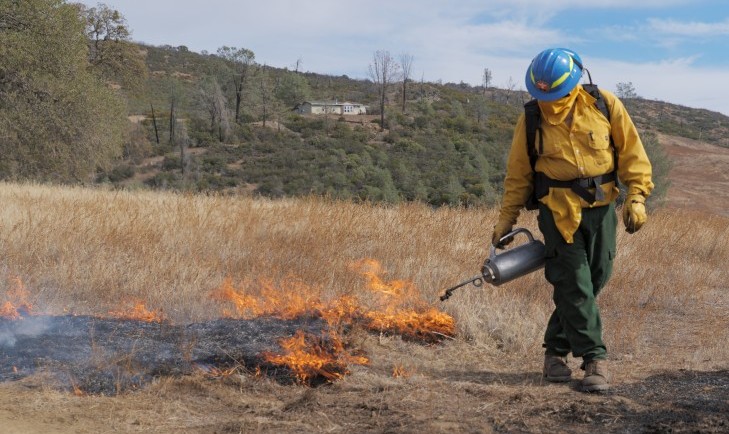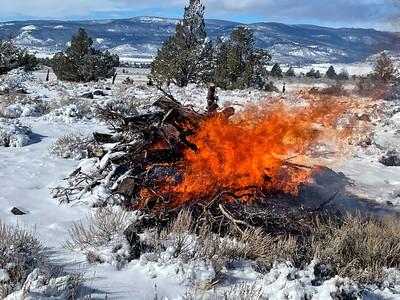02/06/25
Best of the West: Supporting prescribed fire; rural health; RECA; affordable housing in WA; wildfire recovery in WY; national parks housing

The Western Governors' Association keeps you updated on the latest news in the West. Here are the top stories for the week starting February 3, 2025. (Photos courtesy of Adobe Stock Images, the U.S. Bureau of Land Management, and the Office of Washington Governor Bob Ferguson).
Prescribed fire is an important tool for land managers to utilize in the effort to prevent out-of-control wildfires, protect the public from smoke, maintain healthy ecosystems, and support soil and plant health.
For decades, however, national wildfire management policy was to extinguish and suppress all wildfires quickly and completely. Today, the Forest Service recognizes that this put-it-out policy, “is a strategy of the past that unfortunately helped create the wildfire crisis of today.”
Now, land managers increasingly support the need for prescribed fire and are meticulously implementing it on the landscape, often with the help of Indigenous communities who have been utilizing fire on their lands for thousands of years.
Healthy prescribed burning can reduce hazardous fuels in overcrowded forests, minimize the spread of pests and diseases, improve habitat and soil, minimize smoke produced from large wildfires, and bring numerous other benefits to the landscape.
Last month, WGA hosted experts with the U.S. Department of the Interior (DOI), the U.S. Department of Agriculture (USDA), the U.S. Environmental Protection Agency (EPA), and the Centers for Disease Control and Prevention (CDC) to further explore the benefits of prescribed fire and discuss pathways to increased burning while protecting the public from smoke.
The webinar, which is available to watch in full on YouTube, covered ongoing efforts to align the goals of prescribed fire with public health goals related to smoke.
Throughout the region, smart prescribed fire practices are being supported by Western Governors. In WGA’s bipartisan policy resolution on air quality, the Governors agree that “effective forest management techniques, including mechanical thinning of forests and prescribed fires, can dramatically reduce the size and severity of wildfires and their corresponding effect on air quality. Western Governors support the increased use of prescribed fire, when and where it is safe, to reduce the air quality effects of uncharacteristic wildfire in the West.”
In the Pacific Northwest, Oregon Governor Tina Kotek signed a bill last year to establish a pilot Prescribed Fire Liability Program, which is intended to increase the use of prescribed fire and cultural burning and support fire practitioners on the ground. In Washington, the state’s Department of Natural Resources launched a Prescribed Fire Program in 2021 which also works to reintroduce successful prescribed fire practices on the landscape.
Elsewhere in the West, prescribed fires have been ramping up during fair weather windows, which often land in the early spring or late fall. Recent prescribed burns in Arizona have treated as much as 10,000 acres in a single year. Projects in Nevada, California, and Wyoming last year also aimed to treat thousands of acres. In Utah, the state’s Prescribed Fire Council brings together fire practitioners from government, coalitions, tribes, and academic institutions to expand the responsible use of prescribed fire on Utah’s landscape.
during fair weather windows, which often land in the early spring or late fall. Recent prescribed burns in Arizona have treated as much as 10,000 acres in a single year. Projects in Nevada, California, and Wyoming last year also aimed to treat thousands of acres. In Utah, the state’s Prescribed Fire Council brings together fire practitioners from government, coalitions, tribes, and academic institutions to expand the responsible use of prescribed fire on Utah’s landscape.
The effort to bring more prescribed fire to western landscapes is being supported and led in many cases by Indigenous tribes, many of which have utilized fire for thousands of years. Tribes on the West Coast such as the Yurok, Karuk, and Hoopa have been particularly instrumental in bringing deep knowledge and understanding to the practice of prescribed burning, which has also helped shift land managers’ relationship to “good fire”.
Click here to learn more about WGA’s recent webinar and find more resources on wildfire.
Rural health care: in New Mexico, Governor Michelle Lujan Grisham announced that 26 rural health care providers will receive $40.6 million from the state’s Rural Health Care Delivery Fund to improve health care access in all areas of the state.
The funding will support a variety of services, including behavioral health, primary care, maternal care, and child health care.
“Every New Mexican deserves access to quality health care close to home,” said Governor Lujan Grisham. “My administration is committed to supporting and strengthening the health care provider network. By reducing financial barriers for rural providers, this fund will expand access to care and positively impact the health of New Mexicans.”
RECA and day of remembrance: last week, a day of remembrance was observed to acknowledge the harm done to “downwinders” from nuclear testing between the 1940s and 1960s in the United States. Shortly before the day of remembrance, a bipartisan group of senators reintroduced the Radiation Exposure Compensation Act, which passed the Senate twice last year but was never considered in the House.
This version of RECA expands coverage in Nevada, New Mexico, Utah, Colorado, and other states to provide compensation to those affected by nuclear weapons testing and uranium mining in broad areas of the West.
Western Governors have consistently advocated for the passage of RECA via letters to congressional leadership.
Washington affordable housing: to support new affordable housing construction, Washington Governor Bob Ferguson announced $14.6 million in new grant funding. The projects, which are funded through Washington’s Connecting Housing to.jpg) Infrastructure Program, will support 24 projects and result in 1,800 new affordable units in the state.
Infrastructure Program, will support 24 projects and result in 1,800 new affordable units in the state.
Governor Ferguson named housing affordability as one of his top priorities shortly after taking office last month, and he has committed to putting Washington on a path to building 1.1 million housing units over the next 20 years.
Wyoming wildfire recovery: following the Cowboy State’s historic 2024 wildfire season, Governor Mark Gordon visited with hundreds of affected landowners, local leaders, emergency responders, and the public to detail his $130 million budget request for wildfire restoration and recovery efforts.
Governor Gordon heard from hundreds of attendees about what is needed on the ground to rebuild affected areas from last year’s destructive fires. The Governor’s budget recommendation is currently before the Wyoming Legislature.
Montana high schoolers build housing: since 2019, students at Columbia Falls High School have been helping build cabins and other buildings for Glacier National Park. This year, students are wrapping up their sixth two-bedroom cabin and their thirteenth structure for the park.
Glacier National Park has experienced housing shortages in recent years, which has led to difficulties in hiring and retaining employees. Officials said that the School-to-Park program has helped address some of these issues, while giving high school students hands-on experience with carpentry, plumbing, and other skills.